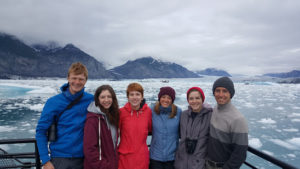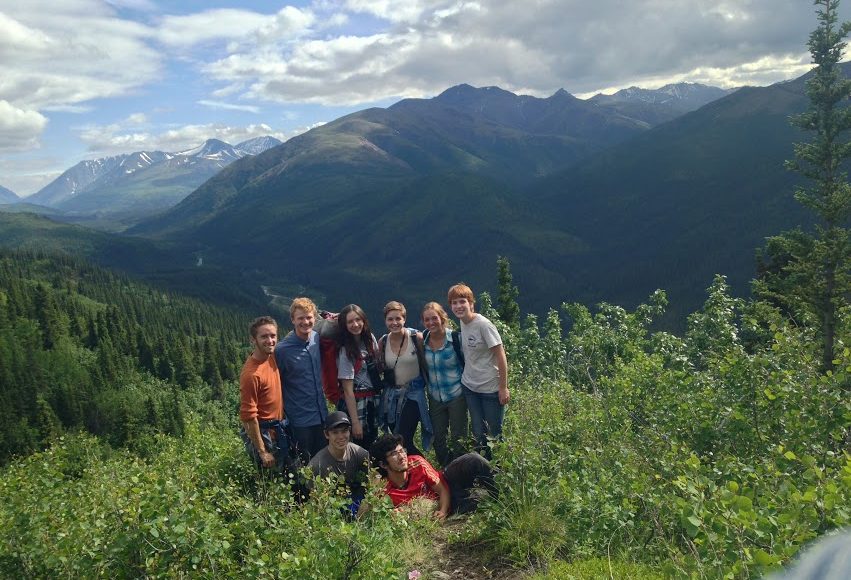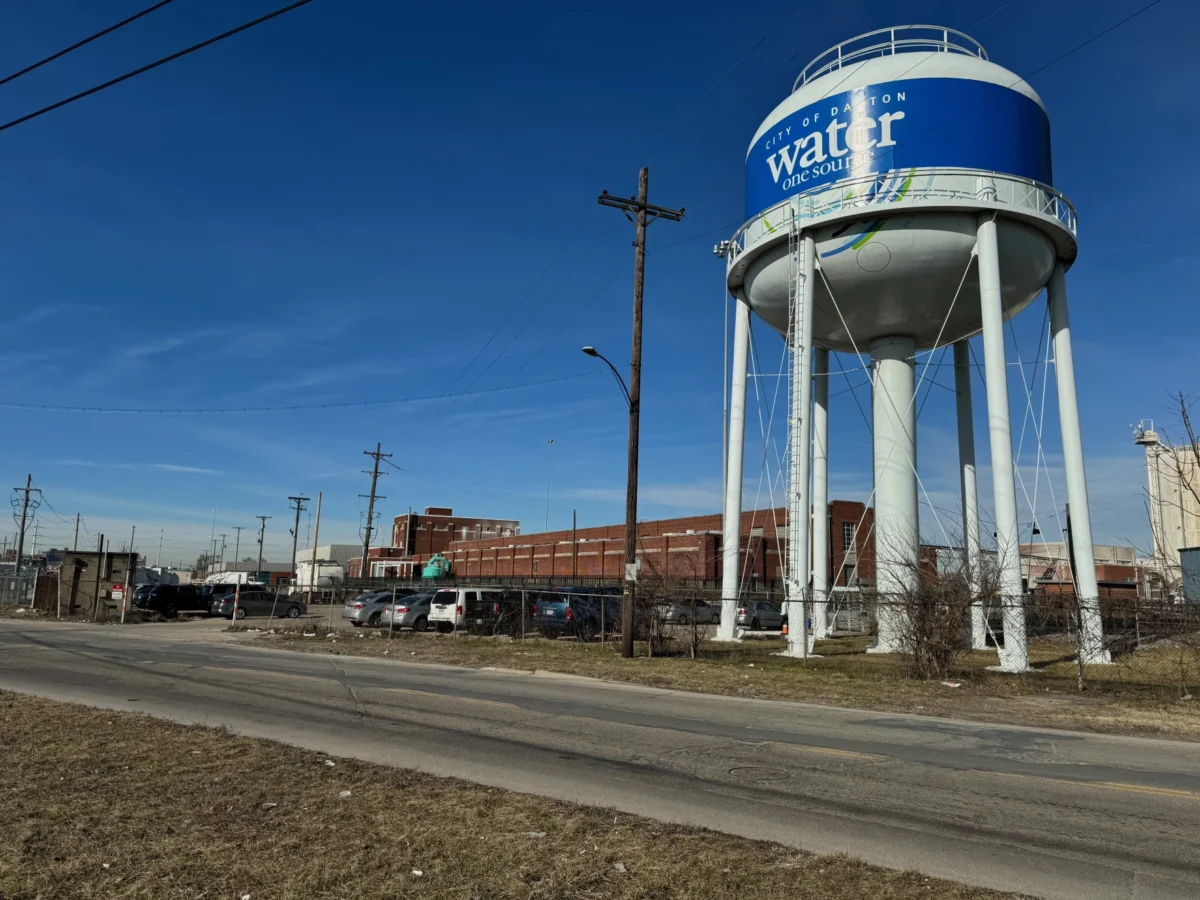For my fourth co-op, I worked at the University of Alaska in Fairbanks’ International Arctic Research Center as a part of their Research Exper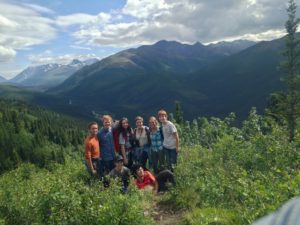 ience for Undergraduates (REU) program. As part of an REU program, you work with a mentor on a research project which you present on at the end of the program, as well as participate in many lectures and field trips. The focus of this REU program was “the Arctic as a System.” All of the lectures had a focus on arctic science, and the field trips were to geological features unique to this region, like the Toolik Lake Ecological Research Station and Gulkana Glacier. One of the most valuable aspects of this REU program were the weekly lectures. At first, the idea of lectures seemed out of place in what I thought was to be a very serious research position and I felt that they would take an unnecessarily large amount of time away from my project, but I am pleased to say I was wrong about that. The lectures taught me about many aspects of the arctic environment, like glaciers and permafrost, but more importantly, they taught me about science communication, and how to work with people outside the scientific communities, like politicians and stakeholders, to get my research to the people who need it.
ience for Undergraduates (REU) program. As part of an REU program, you work with a mentor on a research project which you present on at the end of the program, as well as participate in many lectures and field trips. The focus of this REU program was “the Arctic as a System.” All of the lectures had a focus on arctic science, and the field trips were to geological features unique to this region, like the Toolik Lake Ecological Research Station and Gulkana Glacier. One of the most valuable aspects of this REU program were the weekly lectures. At first, the idea of lectures seemed out of place in what I thought was to be a very serious research position and I felt that they would take an unnecessarily large amount of time away from my project, but I am pleased to say I was wrong about that. The lectures taught me about many aspects of the arctic environment, like glaciers and permafrost, but more importantly, they taught me about science communication, and how to work with people outside the scientific communities, like politicians and stakeholders, to get my research to the people who need it.
I worked under Dr. Eugénie Euskirc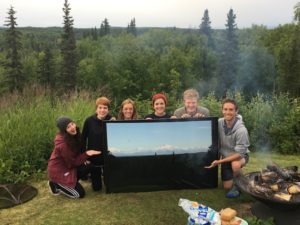 hen on terrestrial ecosystem research. She introduced me to and facilitated my work with the Apex field crew, Danielle, Catherine, Amelia, and Devin. Our research question was, “how does climate change affect ecosystem respiration (i.e. carbon dioxide and methane uptake and emission) in boreal wetlands?” We conducted research at two sites within the Bonanza Creek peatland ecosystem: Alpha, a rich fen, and Beta, a collapse scar bog. We did the majority of our research at Beta, the collapse scar bog. A collapse scar bog is a bog created by thawing permafrost saturating the ground with water, and thus creating a bog. We studied this site in particular as it had actively thawing permafrost. We wanted to know, “how does nitrogen release from permafrost thaw affect carbon dioxide and methane fluxes from the peatland?” To investigate this question, we had multiple plots within the bog; some placed specifically at the active thaw margin, the area within the bog where the permafrost was currently thawing. Half of the plots were treated with nitrogen and the other half were left untreated as a control. We ran gas flux experiments and took porewater samples to see how those measurements change between plots as an indirect way of measuring microbial response to increased nutrients.
hen on terrestrial ecosystem research. She introduced me to and facilitated my work with the Apex field crew, Danielle, Catherine, Amelia, and Devin. Our research question was, “how does climate change affect ecosystem respiration (i.e. carbon dioxide and methane uptake and emission) in boreal wetlands?” We conducted research at two sites within the Bonanza Creek peatland ecosystem: Alpha, a rich fen, and Beta, a collapse scar bog. We did the majority of our research at Beta, the collapse scar bog. A collapse scar bog is a bog created by thawing permafrost saturating the ground with water, and thus creating a bog. We studied this site in particular as it had actively thawing permafrost. We wanted to know, “how does nitrogen release from permafrost thaw affect carbon dioxide and methane fluxes from the peatland?” To investigate this question, we had multiple plots within the bog; some placed specifically at the active thaw margin, the area within the bog where the permafrost was currently thawing. Half of the plots were treated with nitrogen and the other half were left untreated as a control. We ran gas flux experiments and took porewater samples to see how those measurements change between plots as an indirect way of measuring microbial response to increased nutrients.
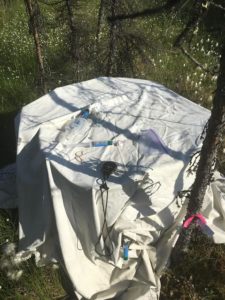
I also helped with a mesocosm experiment being run by the field crew. Mesocosm refers to any experiment that examines the natural environment under controlled conditions. Our mesocosm consisted of large jars with filled with peat and one plant commonly found in peatlands. Six jars had sedges, six jars had horsetail, six jars had grasses, six jars had a shrubs, and six jars had nothing, to act as control, as pictured below. Our research question was, “how do individual plant species affect the character of porewater carbon and thus CO2 and methane fluxes?” Species composition is expected to change with our changing climate, and by examining the impact of individual plant species on respiration, we can better predict how ecosystem respiration will be altered. With the mesocosms, we ran the same experiments as we did at the bog, but on a smaller scale.This image below shows me processing one of the porewater samples from the mesocosm. We would shake the bottle of porewater and then sample the gases released to measure the concentrations of methane and carbon.
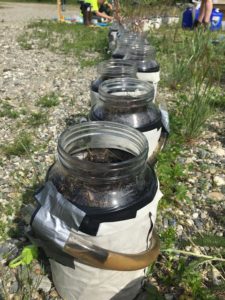
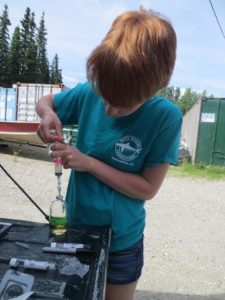
When I was not in the field with the field crew, I worked with Dr. Euskirchen on analyzing sap flow data from black spruce trees as my. We were trying to understand how black spruce trees react to their environment by looking at how sap flow, which is a proxy for water usage, changes as other environmental variables, like temperature or precipitation, are altered. While I did present this work at the end of the internship, it is not complete yet. I plan o n continuing to work with the datasets and eventually publish a paper with Dr. Euskirchen. My experience with this REU program has been very valuable not only for my professional development, but my personal development as well. I have made memories and friends for life.
